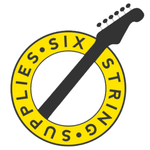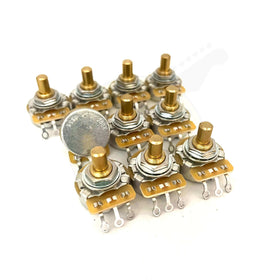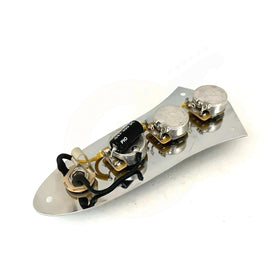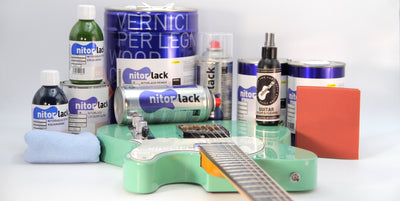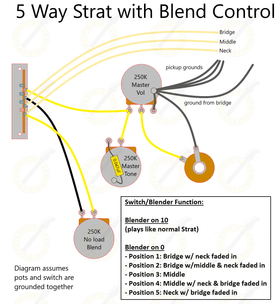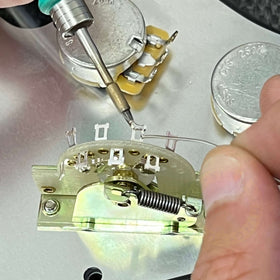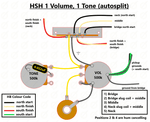
Guitar pots generally fall into two taper categories – audio (logarithmic) and linear. This describes the point of resistance as the pot is turned. For example, a linear pot has a uniform taper – when the pot is turned to its halfway point of the cycle (50%), it will reach 50% of its total resistance, it is a straight line, hence the name linear. It is based on a uniform line, scale and taper. If it is turned to 25% of its cycle, then it will have a resistance reading of 25% and so on.
Audio pots on the other hand will increase/decrease most of its resistance in the final 50% of its rotation. So which one is better and which guitars use linear or audio? It is down to personal preference.
The problem with linear pots is that the human ear does not quite work in the same way. So whilst the resistance reading will be 50% when it is turned half way, our ears will interpret it differently. The easiest way to demonstrate this is to increase and decrease the volume on a radio, car stereo or TV. The volume increase from 10-20 is a lot greater than that from 0-10. Despite being equal amounts of volume increase, the difference between the two is unequal.
This is why audio pots were invented - to compensate for the fact that human hearing doesn't work in algorithm form. When both pots are turned all the down, the resistance will be 0% of its stated value and when both pots are fully opened the resistance will be 100% of its stated value. The difference between the two is the levels as they are being rotated. As you can see from the graph below, there are several different variations of logarithmic/audio tapers available.

There is no general rule of thumb with guitar electronics. Many imported models will use audio (marked A500K/A250K) for volume controls and linear (marked B500K/B250K) for tone.
Fender tend to use audio pots for both volume and tone. Gibson have chopped and changed over the years. Epiphone use linear for volume and audio for tone but they too have changed and reversed this so that they use audio for volume and linear for tone.
Bottom line – choose what is best suited to you. Linear pots will give a uniform decrease in volume/tone (you will notice more of an effect on each control knob setting) whilst audio will give a more instant (quicker) increase or decrease in volume or tone. If you gig a lot, audio may be better for a quicker boost while on stage. Most online retailers of wiring kits or prewired kits will use log for both volume and tone controls.
There are plenty of variations, specifications and tapers for potentiometers, but ultimately, they all do the same thing. They all achieve the same results but will achieve the results at different points in their rotational sweep.
Try and ignore all of the marketing hype around "vintage taper" or "vintage spec" pots. Avoid falling for high priced pots claiming to have special tapers, not seen on any other potentiometer available on the market. Guitars in the 50's used a standard 10% audio taper pot - what is referred to today as being a "modern audio" taper pot. Don't believe the hype.
There are also pots that fall between the two - our very own SSS Premium® CTS pots fall somewhere between full on audio and linear. They give a more uniform taper sweep with none of the sudden drop offs which is a common complaint with many modern audio taper pots.
Guitar Wiring FAQ
